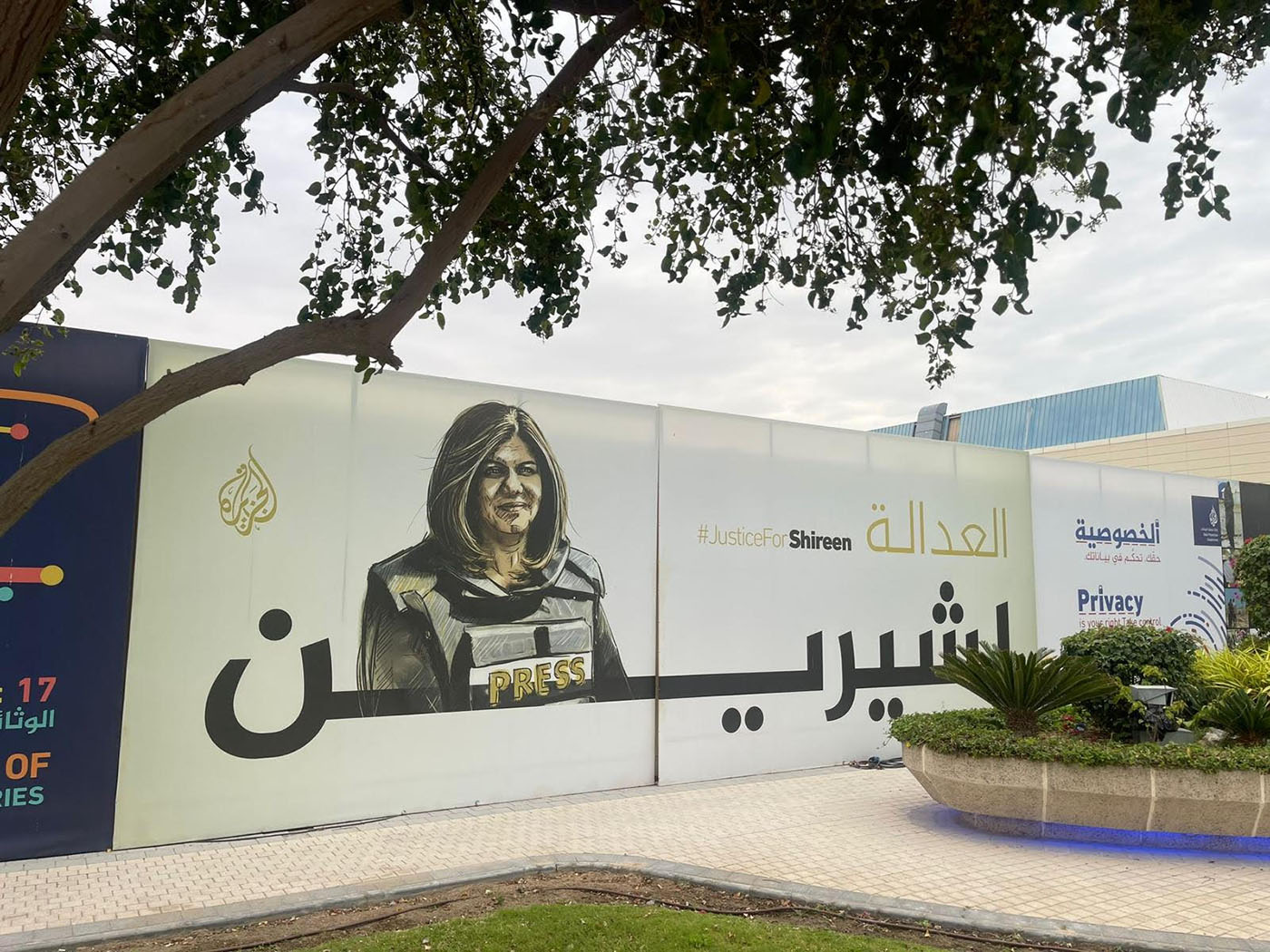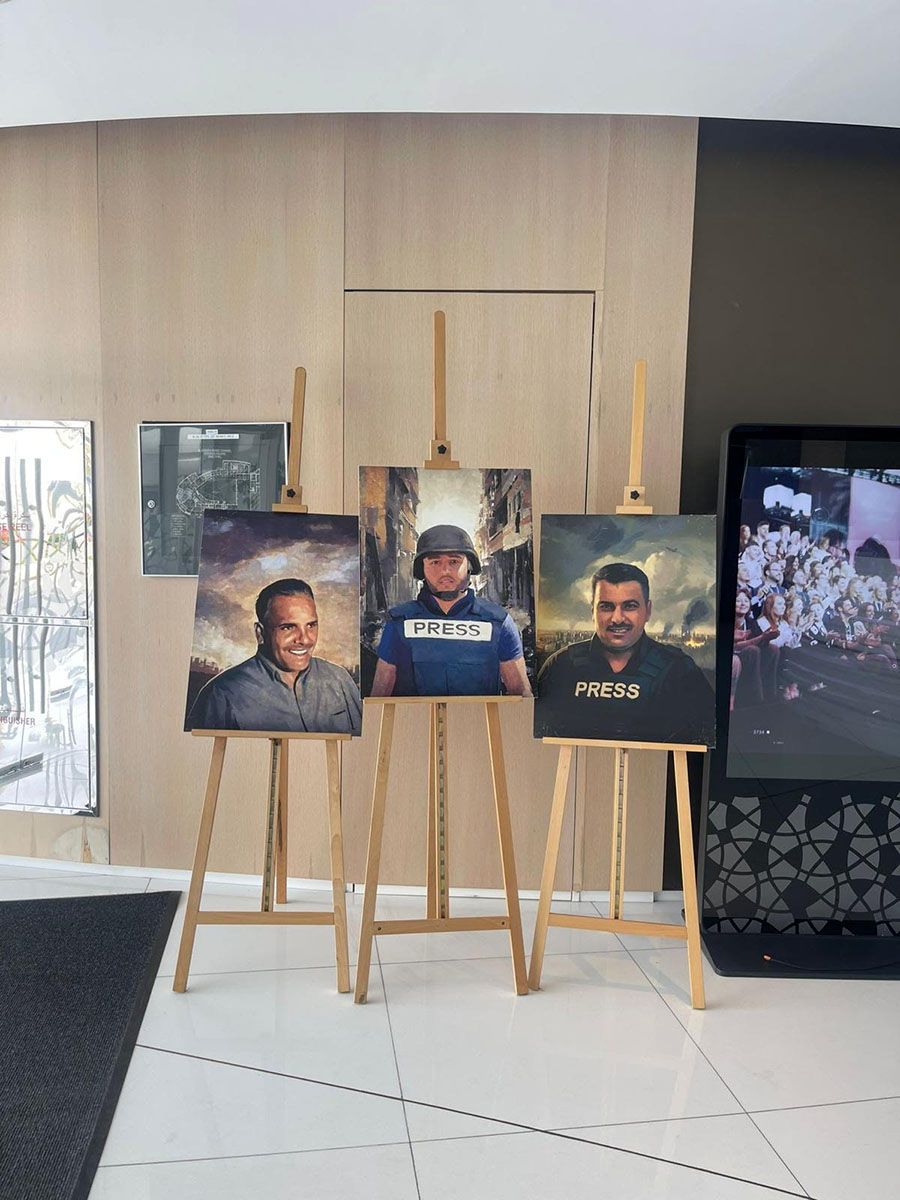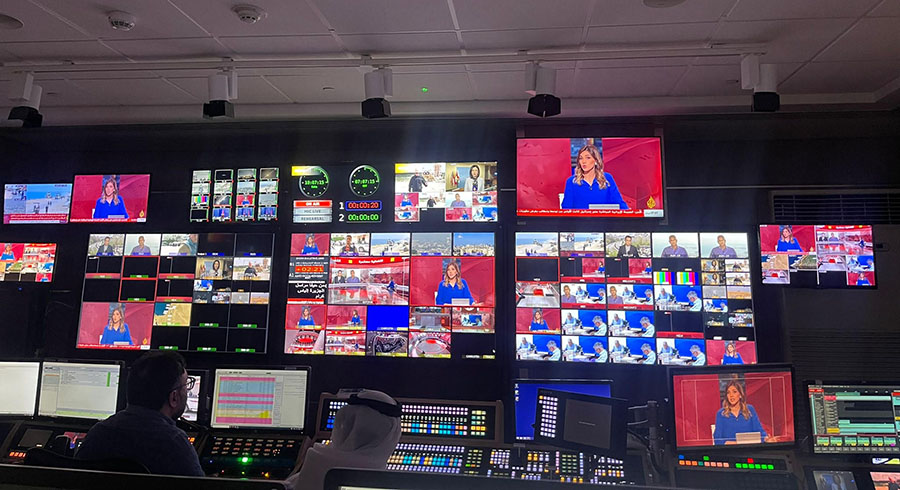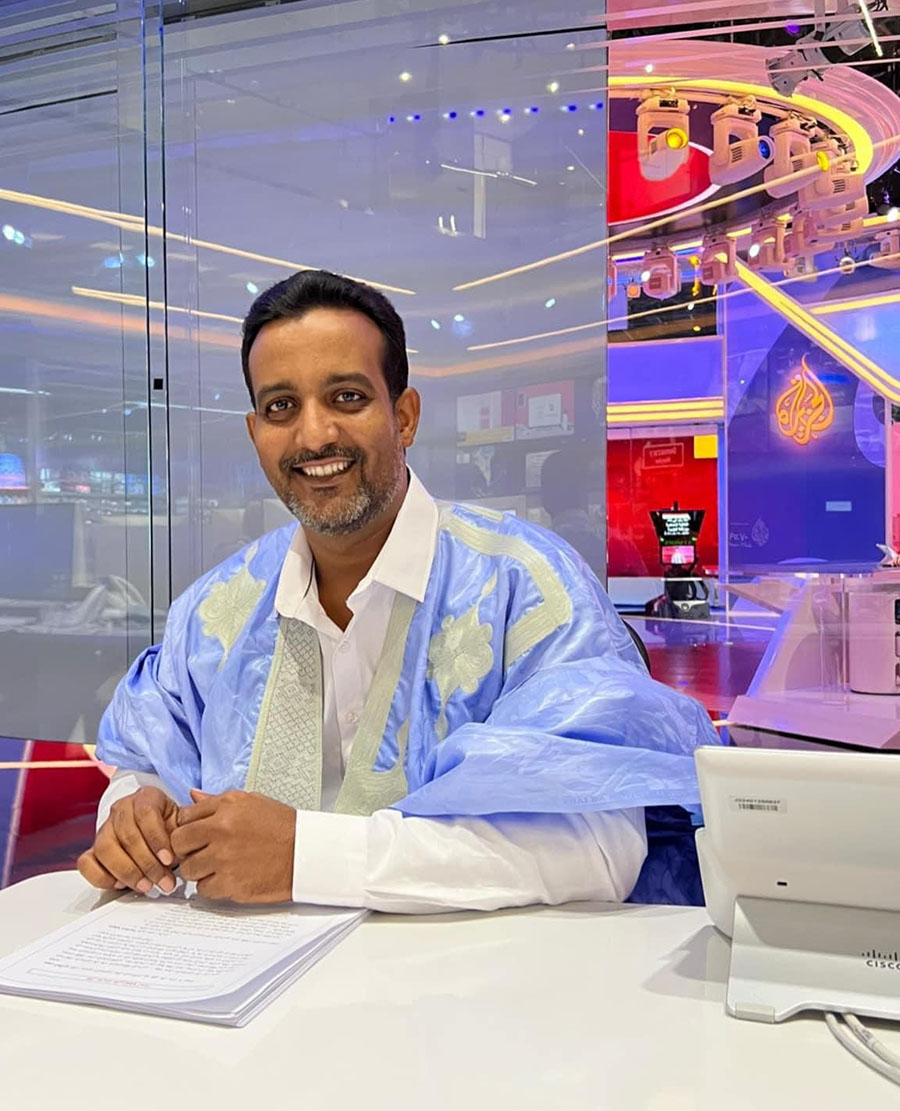The Middle East’s best-known news channel in the Middle East, Al-Jazeera, grapples with the unending death toll of Palestinians and its correspondents in Gaza.
Ahmed Isselmou
Translated by Rana Asfour
In late March 2011, during the revolt against the Gaddafi regime in Nalut, a city in the far west of Libya, I found myself hiding in a house under the watchful guard of Libyan militants. It was 3:30 in the morning, and the night was dark. Following a violent knock on the door, one of the guards rose up at the ready and looked out the window. Upon recognizing his colleague, he opened the door. A voice could be heard.
Notify Ahmed that the bodies have arrived at the hospital. I can secure admission to the morgue if he moves immediately.
The guard didn’t need to tell me. Dressed in only a thin pair of pajamas, I was ready to go, wondering whether my camera’s battery was sufficiently charged.
Less than ten minutes later, I had my first direct encounter with death.
The morgue worker opened the refrigerator doors, uncovering gray bags that held what remained of the dismembered bodies. Out of the seven corpses, not one body was fully intact. It suddenly dawned on me that I was the only journalist with access to this mess and it was my responsibility to ensure the images reached the channel I was working for as soon as possible.
An hour later, these images appeared on people’s screens, and the world saw what I had witnessed. It was at that moment horror seized me.
That brief meeting was just the beginning of my many subsequent encounters with the dead. In the past 13 years, witnessing a lifeless body nearly every day has become routine for those working for major news channels in the Arab world.
I offer this experience as a prelude to something more dreadful.
Days of Bitter Tears
On July 15, 2014, I arrived in the Qatari capital, Doha, to take Al-Jazeera’s entrance exam. I had come from Dubai, where I worked at a rival channel. At that time, Israel’s war on Gaza was at its peak, and Al-Jazeera’s coverage was one of the main reasons I accepted the offer, when it came, to work for the channel.
Nearly ten years later, as the Editor-in-chief of news bulletins at Al-Jazeera, I am responsible for the morning editorial team. Though the title may sound impressive, it is offset by the fact that each day begins with tragic tidings. I come from a Bedouin Mauritanian background, where popular mythology suggests that whatever you start your day with, you will end it with. As such we tend to avoid unsettling events in the morning. However, the work culture in Arab newsrooms is far removed from these traditional beliefs.
As part of my job, I have numerous responsibilities that involve assigning stories and working with various editorial teams. This means that I am obliged to review every video clip or photo we receive from reporters, news agencies, and open sources to determine its suitability for broadcast.
With the October 7 war on Gaza approaching its eighth month, the task of choosing the appropriate media material for the region’s most viewed channel is proving a psychologically tortuous task.
The video clips that have surfaced from the genocide committed against the people of Gaza, casualties of the Israeli war, have undeniably left a profound impact on all who have seen them. However, unlike regular viewers and social media users who have the freedom to ignore or avoid these disturbing images, journalists cannot simply look the other way.
One of the most difficult days for my team was when Israeli forces initially stormed the Al-Shifa Medical Complex in mid-November. The initial pictures displayed the disintegrated body parts of children scattered throughout the corridors and among tents that had housed thousands of displaced individuals.
On that day, I had six journalists working with me and time was of the essence. A woman journalist was assigned the task of blurring parts of images that showed spilled blood, severe wounds, or amputated organs. This process is time-consuming as each frame of the material needs to be examined separately to ensure that nothing broadcast on the screen contradicts the network’s editorial policy, which stipulates respect for human dignity.
I left my colleague with instructions regarding each video clip, while I turned to deal with other matters. Minutes later, I returned to find that she was not at her desk. I was in a rush to upload the material on screen due to the worldwide attention the medical complex was receiving which, later, turned out to be inaccurate propaganda. I heard faint sobbing from behind the desk. My colleague was struggling to hold back her tears and catch her breath.
Could you assign these videos to someone else? I can’t go on watching them, she said.
I assigned the task to another colleague, but they too couldn’t process the pictures. They were unable to control their loud sobbing. I assigned a third colleague; she clicked on the first image and screamed. A child, its brain spilling out beside it, had her scrambling out of the newsroom to the bathroom.
My task was to absorb the panic and horror that was spreading among the members of our team. I talked about how crucial it was to respect each other’s feelings as colleagues, and I emphasized that we all had the right to express our emotions without fear of being judged or facing negative consequences.
In the end, I assisted the video editor in processing the images. Unfortunately, it was a re-run of what had transpired earlier with my colleagues. This scenario has played out repeatedly during this war. As journalists, we have no choice but to endure psychological damage in order to reveal the truth.
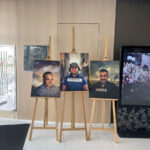


Transcending Tragedy
Processing painful images is not the most difficult task facing news producers on television news channels. It may even be the easiest option, especially when you have grown accustomed to the constant cycle of wars in the region.
When managing field correspondents who provide news and live coverage, the editor-in-chief must balance their professionalism and humanity with the correspondent’s unique circumstances, setting aside their standards for truth.
I have worked as a war correspondent multiple times, including covering the first year of Libya’s war. I understand the challenging conditions that reporters face in the field. Journalists in the Gaza Strip are unique in that they do not face the same risks of accidental “fog of war” death as journalists covering other wars. They do not exchange fire, nor do they die in random bombings. Rather, they and their families have become direct targets.
When broadcasting a news bulletin from the control room, the person in charge is responsible for all aspects of the broadcast. Split-second decisions must be made. However, receiving news about the death of a correspondent with whom one has been communicating on the ground has to be the most difficult experience one can face. In a matter of seconds, a corresponent may lose their life or that of their loved ones. It becomes even more heart-wrenching when you share a personal relationship with the person beyond just professional communication.
Moamen Al-Sharafi was employed as a producer in the Gaza office. During summer, he worked in the Doha offices. He was a cheerful and lively person and we shared many good times.
Less than a month after arriving in Doha, the Israeli war broke out and he returned to Gaza. As a reporter, he skillfully supported the team and provided live coverage. We were working on the morning bulletin together on the day when the Israeli military killed 22 members of his family, including his mother, father, and a number of his brothers and sisters and their children, in an explosion that blew up the house in Jabalia camp in the northern Gaza Strip, where the family had been sheltering. Due to the magnitude of the explosion, he has not been able to recover their remains. A six-meter-deep crater now occupies the space where the multistorey building once stood.
Moamen had started his day with great enthusiasm and efficiency, reporting the news with precision and professionalism. By evening, he was reporting his personal tragedy. None of us, sitting in our newsrooms far away, could even begin to comprehend the magnitude of his loss.
A few days ago, when the Israeli occupation army withdrew from the Al-Shifa Complex after storming it for a second time, news correspondent Ismail Al-Ghoul was scheduled to appear on air in the first live broadcast from the area. He had reported to work only minutes after burying his brother.
During the siege of the northern Gaza Strip, which lasted for several months, news correspondent Anas Al-Sharif — one of the few journalists who remained there and whose father was killed by the occupation at the beginning of the war — wrote a post about his struggle to find a meal for his young daughter after searching for nine hours straight.
This was a surreal moment for me. We often see journalists in their professional attire, but how many of us stop to consider their daily lives beyond their on-screen persona? How do they spend their days? How do they eat, sleep, and care for their families?
The current Israeli offensive on Gaza is the longest and deadliest to date, and the worst in targeting journalists.
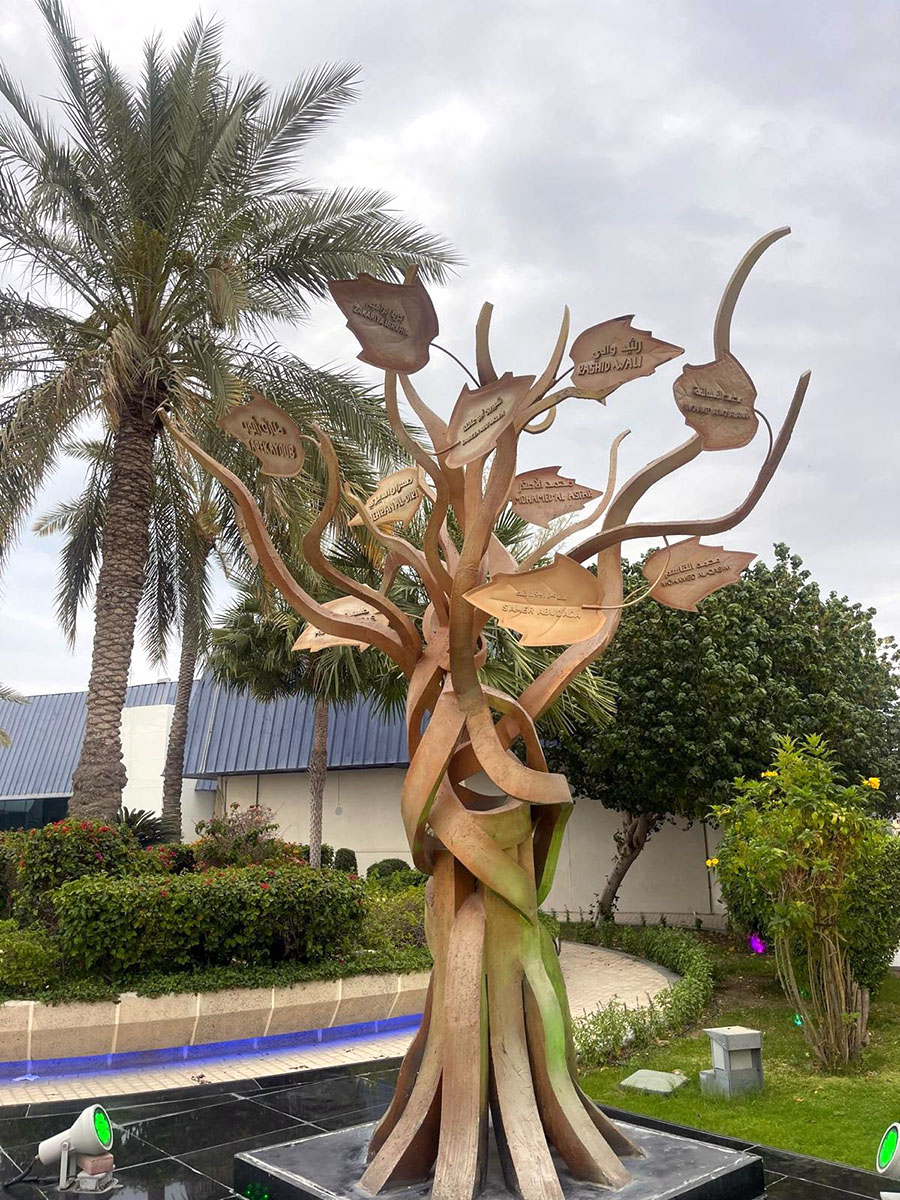
Tree of Martyrs
At the entrance to the Al-Jazeera Media Network headquarters is a metal tree adorned with the names of the network’s martyrs on its leaves. The first name on the tree is the reporter Tariq Ayoub, our colleague who was killed by American forces in a direct bombing that targeted the network’s office in Baghdad during the occupation of Iraq in April 2003. Joining him is Rashid Hamid Wali, who was killed in armed clashes in Karbala, Iraq, and Ali Jaber who was killed in March 2011 during a direct bombardment by Gaddafi’s brigades. The names of freelance reporter Mohamad al-Massalma and correspondent Hussein Abbas are also there. Al-Massalma was killed in January 2013 in Daraa, Syria, from a direct targeted hit by a Syrian sniper; he had been running across the street with a crew, holding a clearly marked Al-Jazeera TV mic. Abbas was killed during a bombing in the Idlib countryside in Syria in May 2014.
After I joined Al-Jazeera, I witnessed that sacred tree taking in the names of more of the deceased. In September 2014, unknown assailants killed my colleague, digital reporter Mohamed Abduljaleel al-Qasim while he was returning from a press coverage in the Idlib countryside, in Syria. Similarly, in December of the same year, digital correspondent Mahran Al-Dairi was killed on his way to cover the Syrian countryside of Daraa where in June 2015, photographer Mohamed Al-Asfar was killed while covering the battles. In December 2015, cameraman Zakaria Ibrahim was killed during a Syrian army bombing in Homs. In July 2016, correspondent Ibrahim Al-Omar was killed by Russian forces during a bombing of the Idlib countryside in Northern Syria, and in August 2018, journalist Mubarak Al-Abadi was killed in Yemen while covering the battles in the northern Al-Jawf region.
Our colleague Shireen Abu Akleh, who was killed by an Israeli sniper on May 11, 2022, is featured in a large mural at the entrance to our network. Our colleagues journalist and cameraman Samer Abu Daqqa, killed on December 15, 2023, and network journalist and cameraman Hamza Al-Dahdouh, killed on January 7, 2024, are the latest to join the registry of the martyred. The pictures displayed in the corridors and entrances of the network’s headquarters serve as reminders that their deaths aimed to silence the voices of truth.
The wide range of perpetrators, including the American, Russian, and Syrian armies, Gaddafi’s brigades and armed militias in Syria, Iraq, and Yemen, highlights the diverse group of victims who have fallen. These media professionals serve as an inspiration for any journalist seeking to speak truth to power. Moreover, their sacrifice preserves Al-Jazeera’s position in the hearts of millions of Arab viewers.
Fruits of the Tree of Love
I was in Nouakchott, the capital of Mauritania, on May 11, 2022, when I woke up to find several condolence messages on my phone. Initially I presumed a family member had passed away overnight, but the senders — mainly from Europe and Asia — eased my worries.
The overwhelming number of condolence messages were for the death of our colleague Shireen. While I had only met her once during one of her visits to Doha, the outpouring of messages made me feel as though she were a member of my own family.
The feeling was strengthened over the next few days as more people congregated to offer condolences. At the vigil protesting her killing, Mauritanian journalists, hours after the incident, could be seen crying, although they had never met her in person and only knew her through the screen. However, to them, she was like a member of their family, like many of the journalists who appear on Al-Jazeera.
In a similar vein, when the Israeli occupation forces killed our colleague Wael Al-Dahdouh’s family, people from distant Mauritanian cities and villages called and messaged me to offer condolences.
The love and appreciation shown by our audience towards our work act as a soothing balm for the painful images we encounter daily. It is my hope that one day, the people responsible for crimes against journalists will be held accountable. Governments must recognize journalism is not a crime. Above all, my deepest wish is for a day when the Arab world will be free from the horror of violence and the corpses left in the aftermath.



